Copenhagen’s Royal Delights
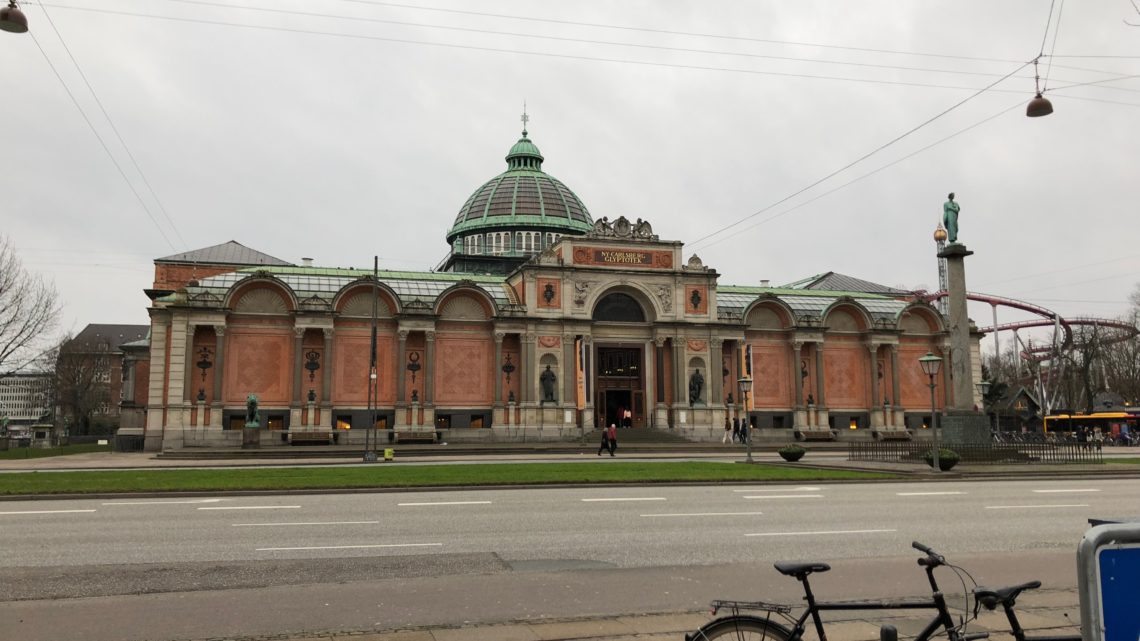
Copenhagen is a beautiful city, rich in both Viking and Royal culture. I had already gotten a taste of that culture when I took my canal tour on my first day in the city and walked all over Strøget and the downtown area. On my second full day in Copenhagen, I explored two of Denmark’s best museums: the National Museum of Denmark and the Glyptoteket art museum. I also discovered some beautiful areas of the city that were not previously on my radar.
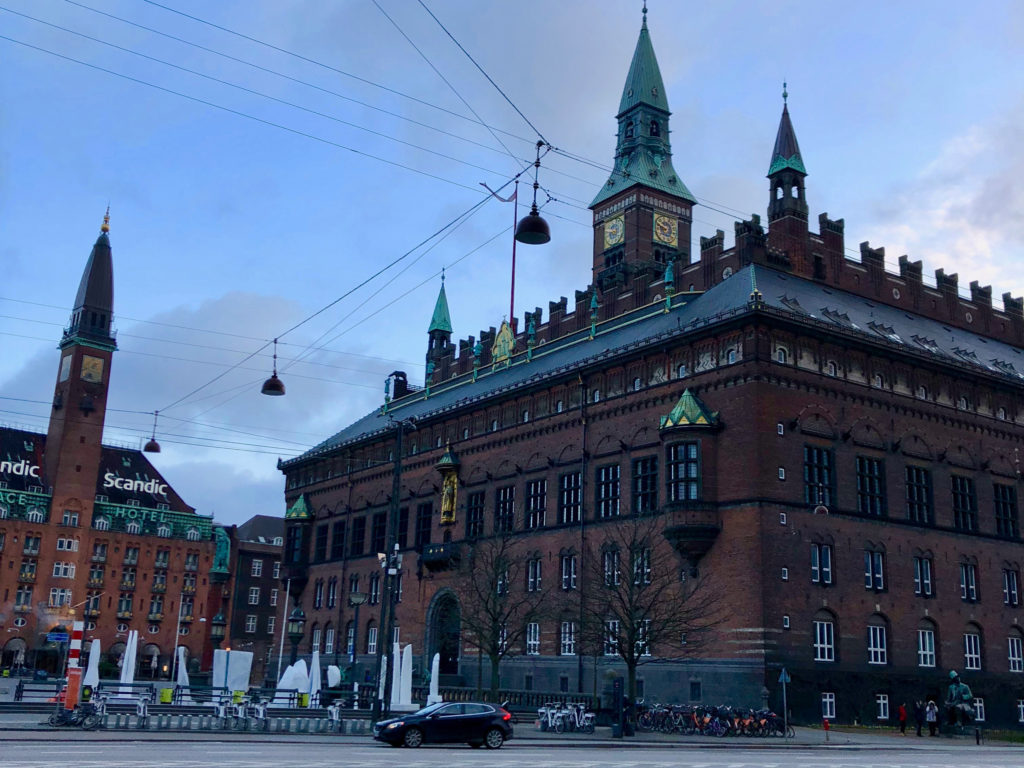
Thankfully, the two museums were within a short walking distance from my hostel. I walked past Tivoli Gardens and Copenhagen’s incredible city hall. This building, built in the National Romantic style, is actually inspired by Siena’s city hall in Italy. While I have never visited Siena, it certainly reminded me of the Palazzo Vecchio in Florence!
National Museum of Denmark
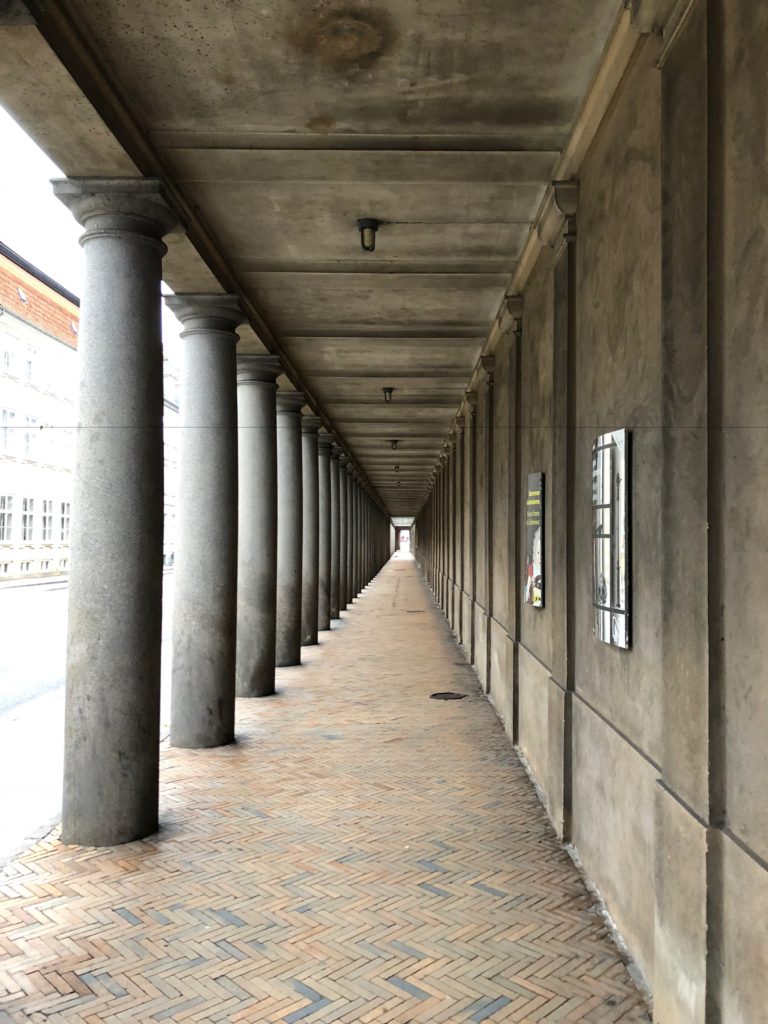
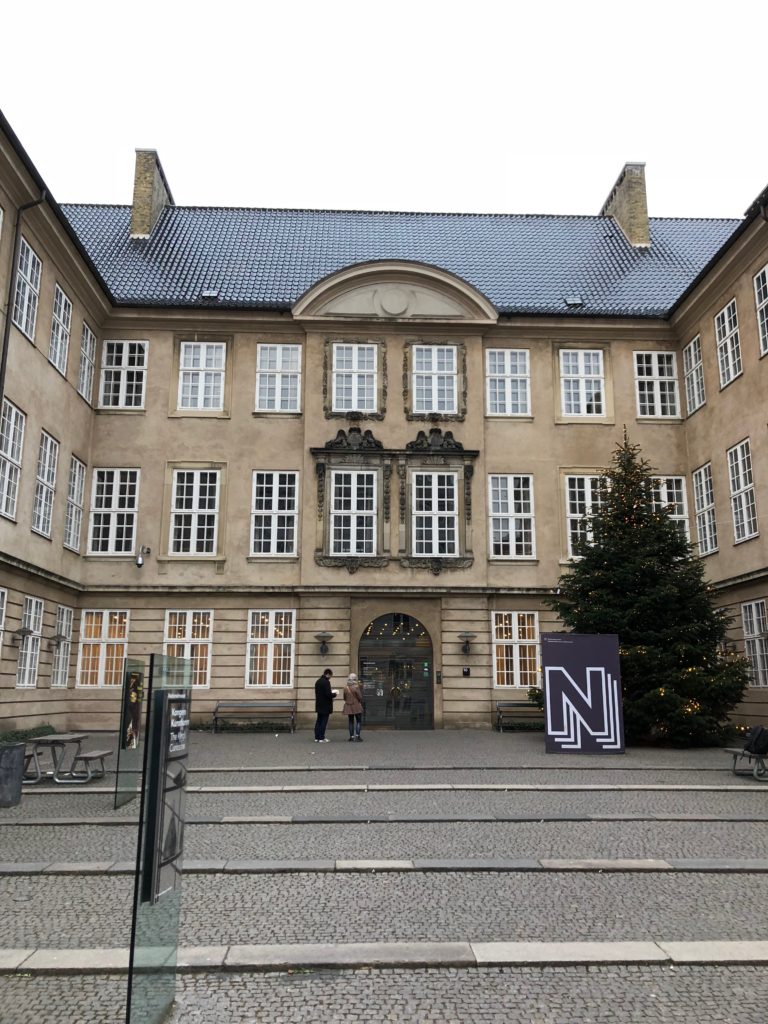
Just around the corner, I arrived at the National Museum of Denmark: a massive rococo style building that was the former mansion for Denmark’s Crown Prince. The rear side consists of a large colonnade lined with Doric columns, reminiscent of the work of Andrea Palladio. The center courtyard in the front houses the main entrance to the museum.
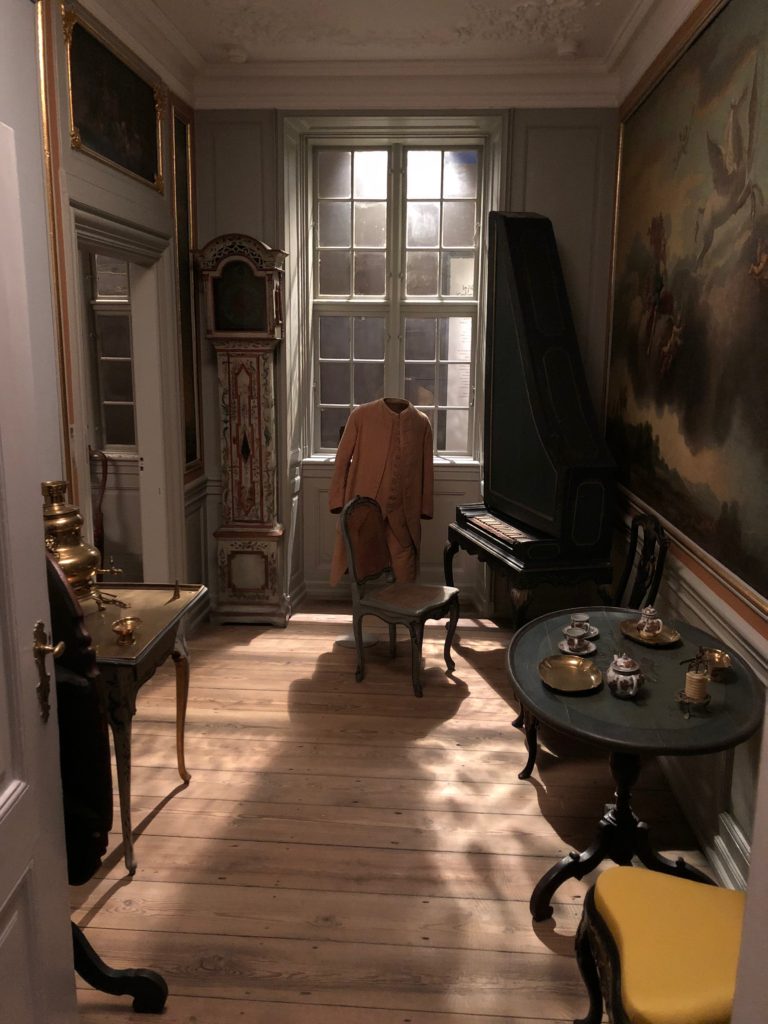
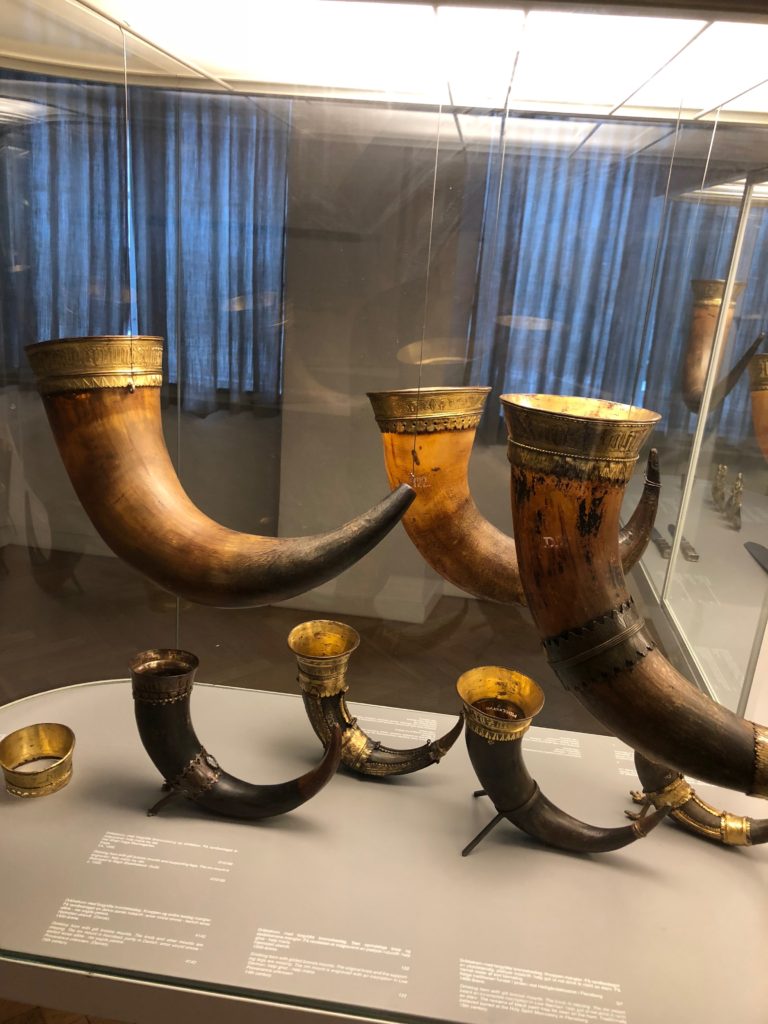
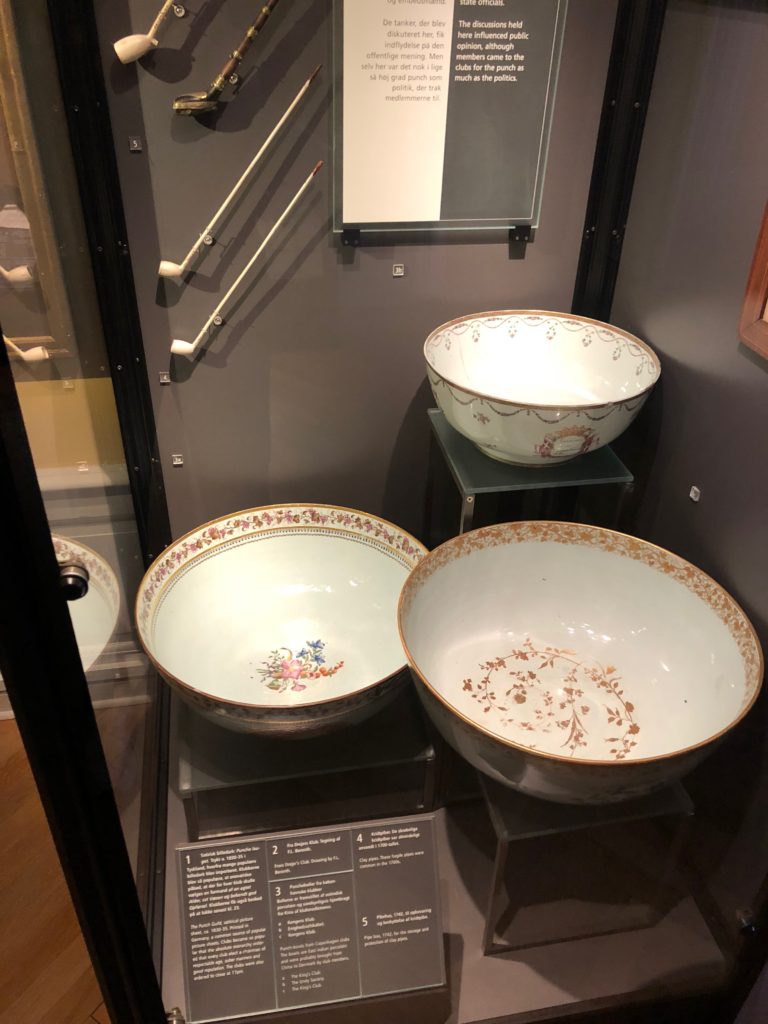
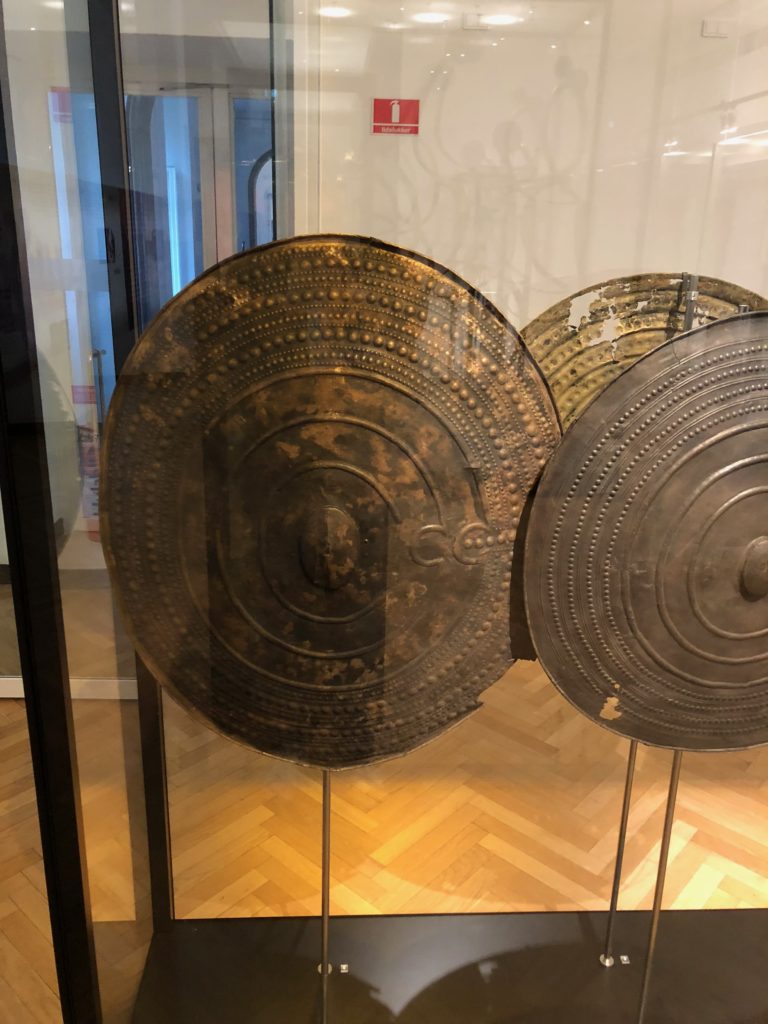
The museum houses artifacts from many periods and tells the story of Danish history from the Viking age up to the modern day. Throughout the museum, I saw everything from mock-ups of furnished rooms to Viking horns and shields. It was everything I imagined the Viking culture to be and was the kind of museum I could spend hours in!
Glyptoteket Art Museum
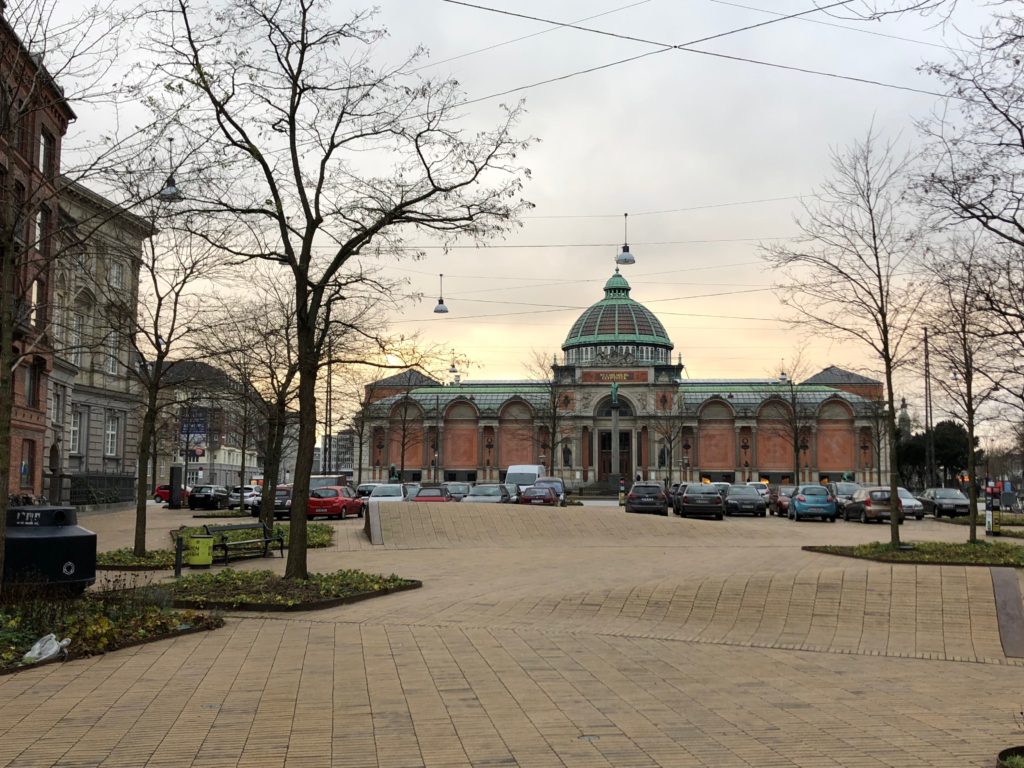
After exploring the National Museum, I headed across the street to the Glyptoteket art museum. Although I am not crazy about art, the museum is free to enter on Tuesdays, so I knew I needed to stop by. Inside, there was a lovely collection of art, primarily sculptures. The building itself is also a delight. It contains four wings, each with a different architectural style. The main wing is built in the historicist style, harkening back to the Venetian Renaissance. Outside, a large red brick façade is compl
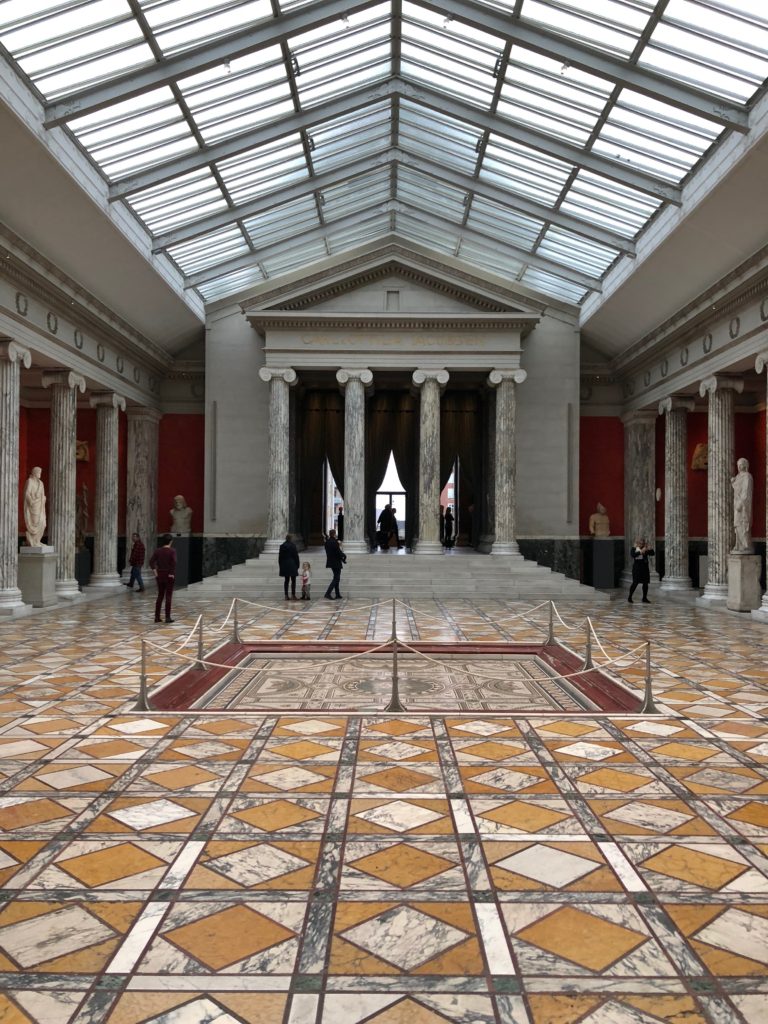
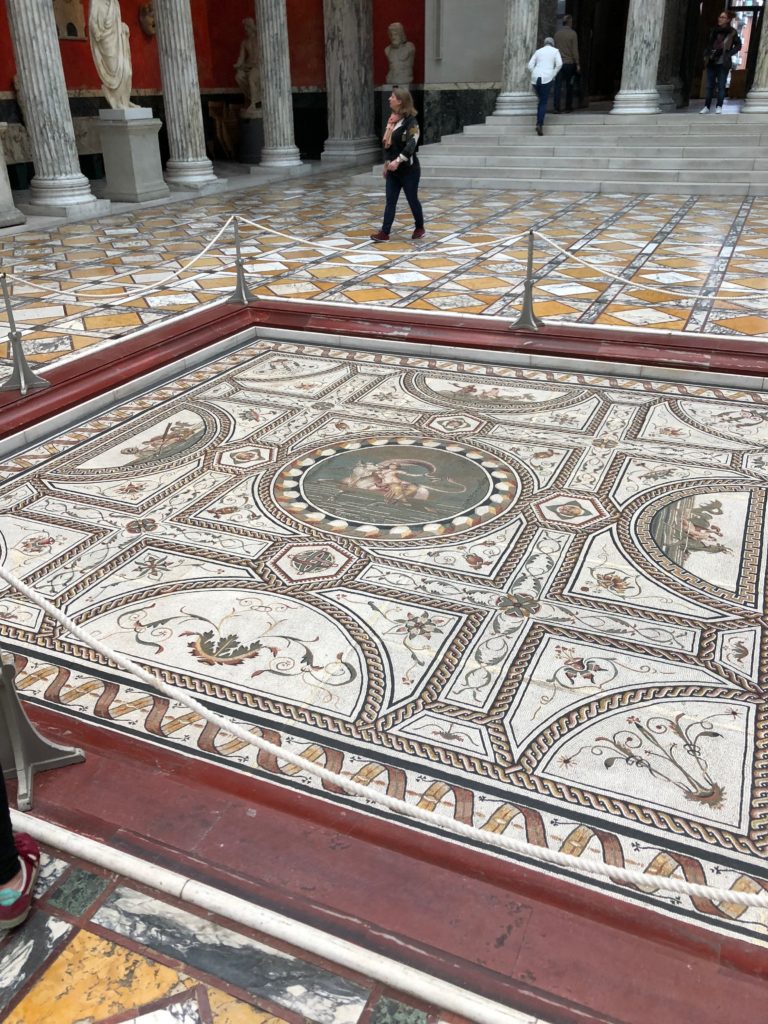
An expansion to the museum was built in the neoclassical style and takes on a more traditional approach. The inside is flanked with Ionic columns displaying the sculptural works. This part of the museum also has an eye-catching floor design, with alternating brown and white marble.
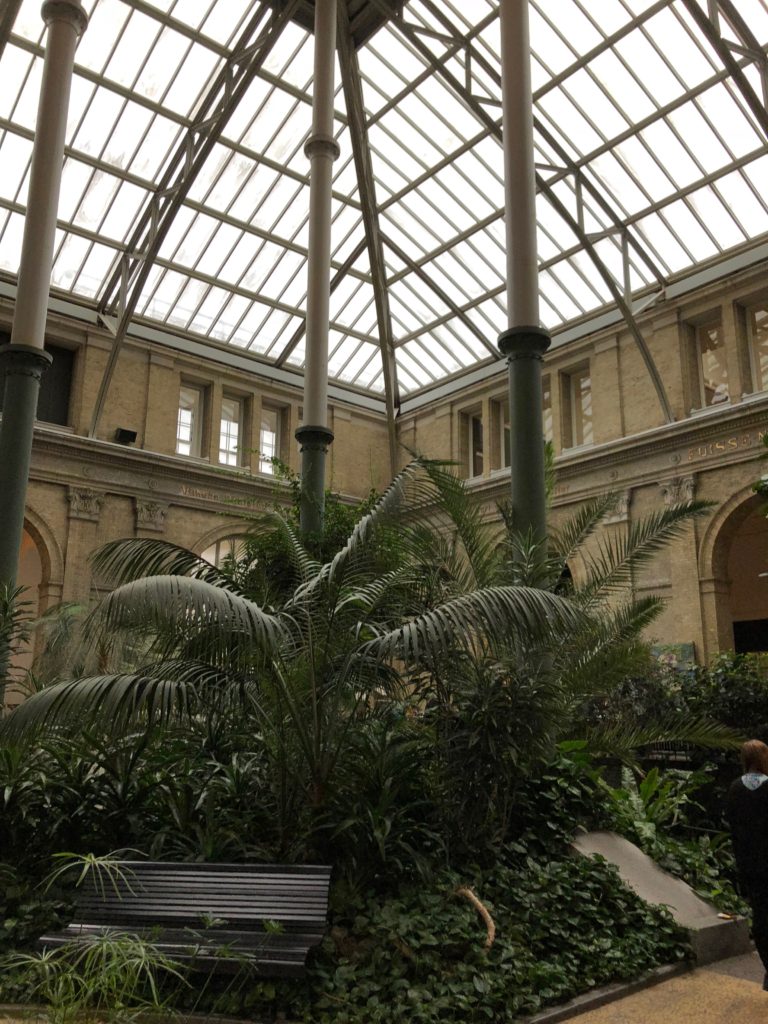
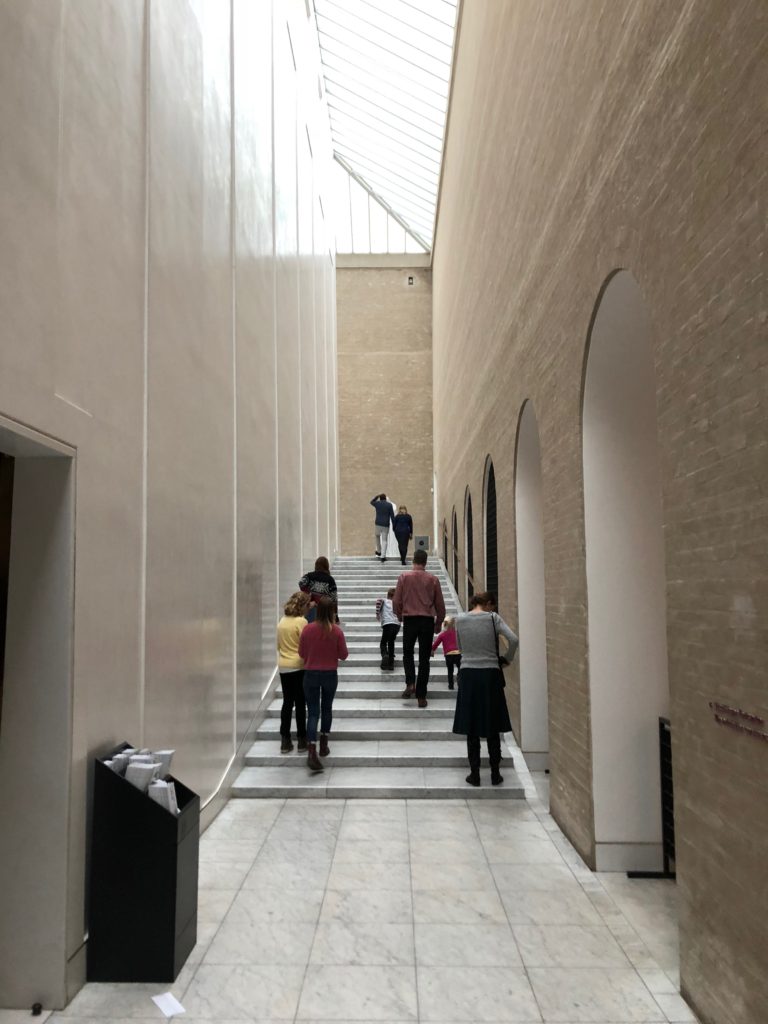
The center of the museum contains an area known as the “Winter Garden.” This area connects the other wings of the museum and creates a central gathering space. A wrought-iron structural system frames the main room and the interior is filled with palm trees and other plants. A fourth wing, located in the rear of the museum, takes on a minimalist approach. This area contains one exhibit hall surrounded by a long, slow-rising staircase.
Ordrupgaard
After a wonderful visit to Glyptoteket, I set off to visit a third museum, the Ordrupgaard. It is located in the suburbs of Copenhagen and is designed by another one of my favorite architects: Zaha Hadid! I walked over to Copenhagen Central station and got on a train bound for Klampenborg.
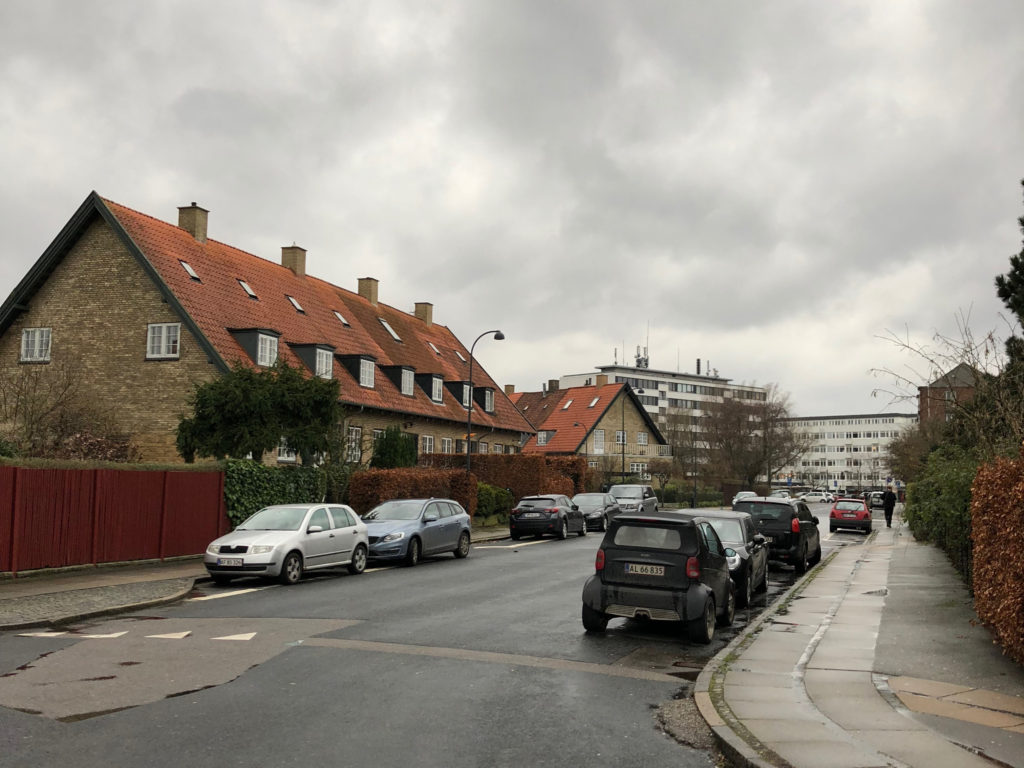
I got off at Ordrup station and walked over to the nearest bus stop, believing it to be the route that would take me to the museum. After waiting and waiting, I got on a bus only to realize that it did not even take me in the right direction. Instead, it took me further up the train line to Klampenborg station. I gave up and hailed a cab over to the museum.
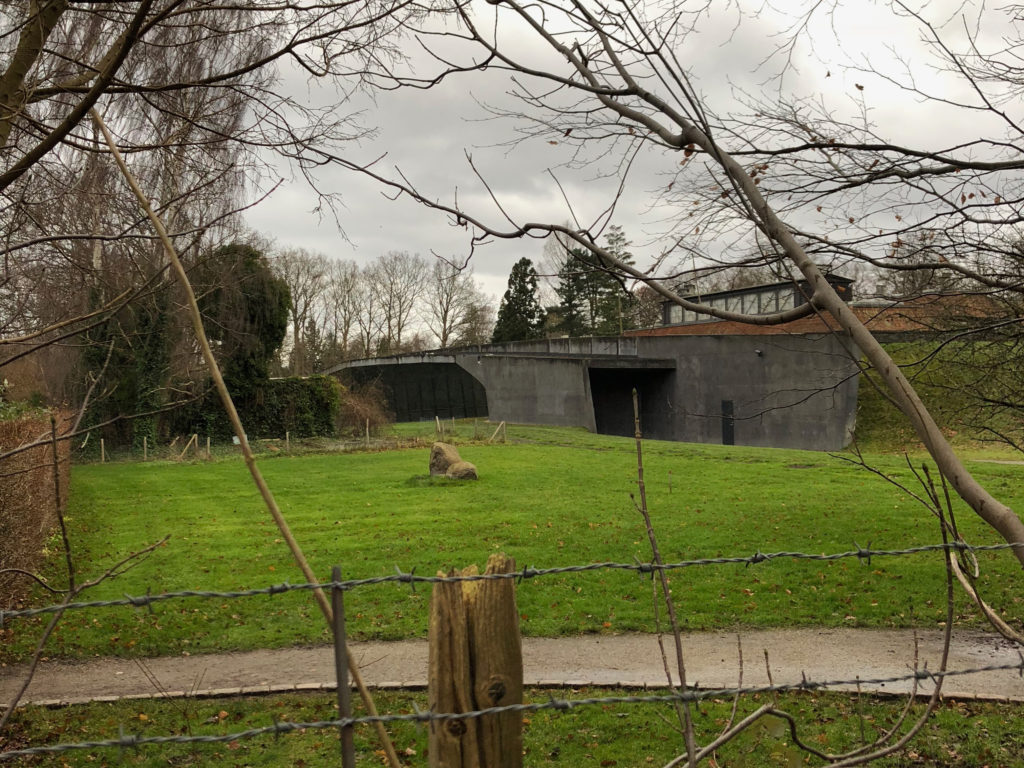
Sadly, I went through all that trouble only to discover that the museum was closed for renovations. The only glimpse I got of it was through the fence from a nearby trail. Despite the disappointment, I had a lovely walk through the quiet Danish suburbs outside the city. I hopped on a nearby bus bound for the train station and headed back into the city center.
Østerport
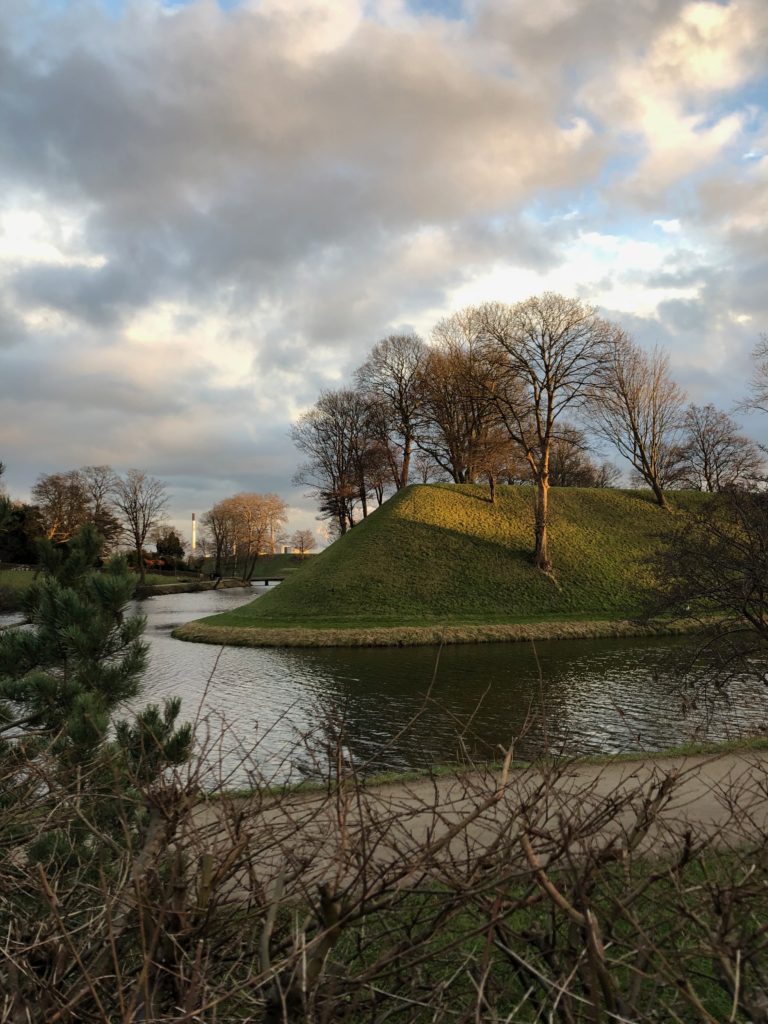
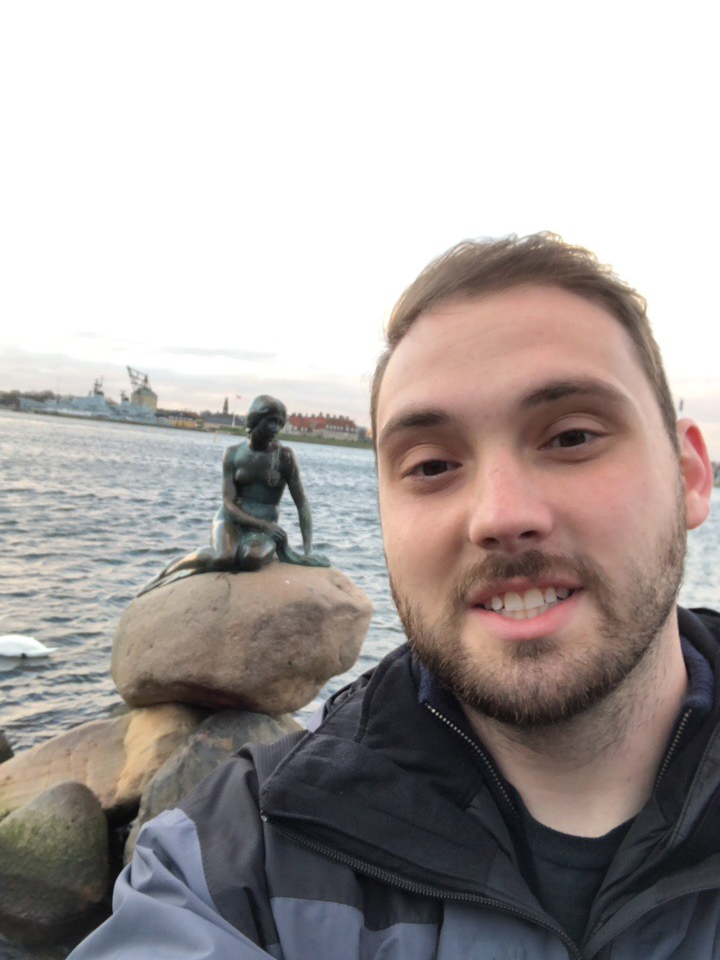
This time, I got off at Østerport station, located right by the harbor. This station is the closest to one of Copenhagen’s premier attractions, The Little Mermaid! I had previously seen it from my canal boat ride but had yet to get up close in person. Unfortunately, like most tourist attractions, it is loaded with crowds, but I was able to get around them and appreciate the beauty of this waterfront statue. And of course, I took the obligatory selfie!
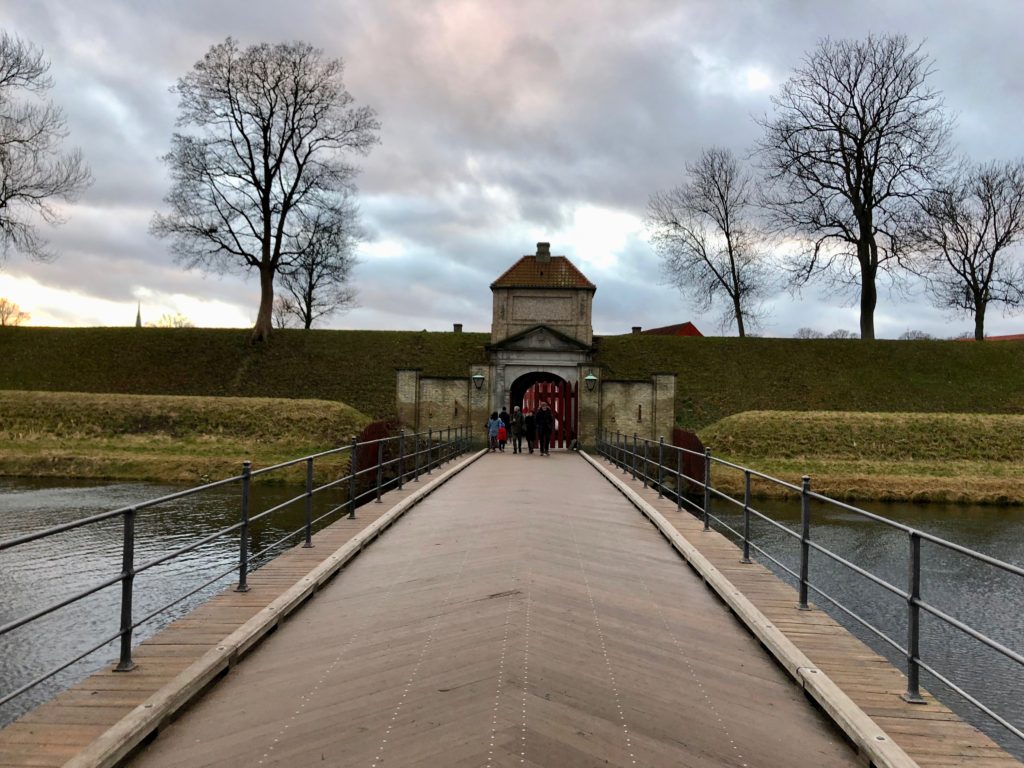
I headed back towards Nyhavn, as this was my favorite part of the city. Along the way, I discovered some more interesting sites that I was not originally planning to visit. Right next to The Little Mermaid is Kastellet, a large star-shaped fortress with several buildings inside.
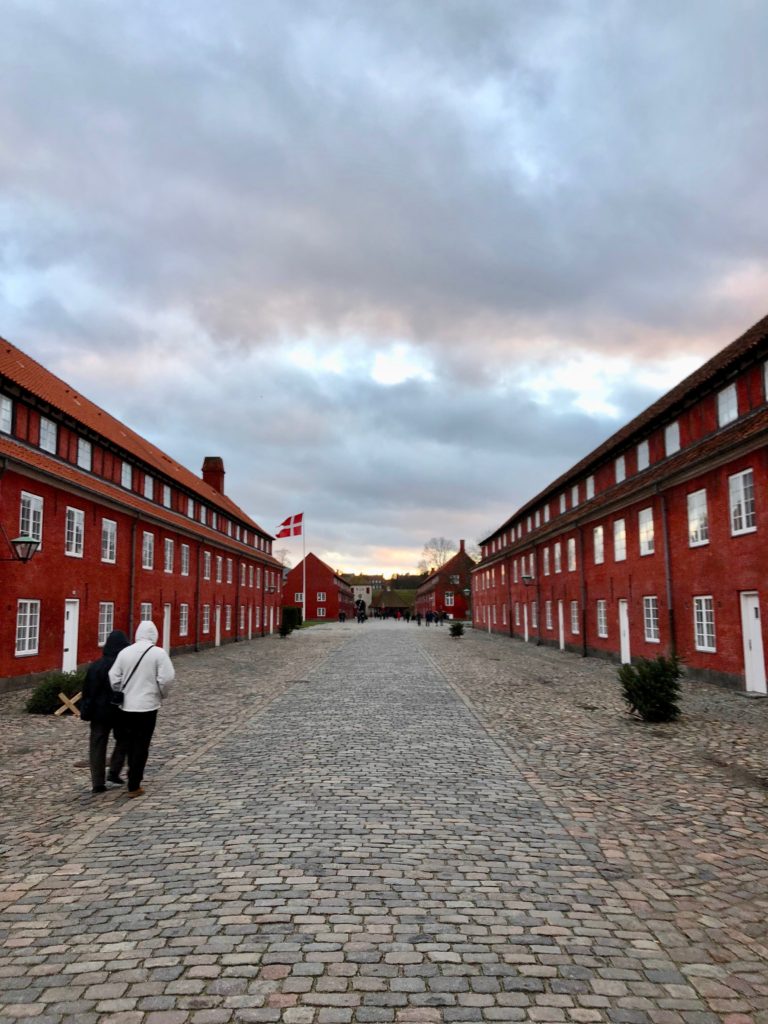
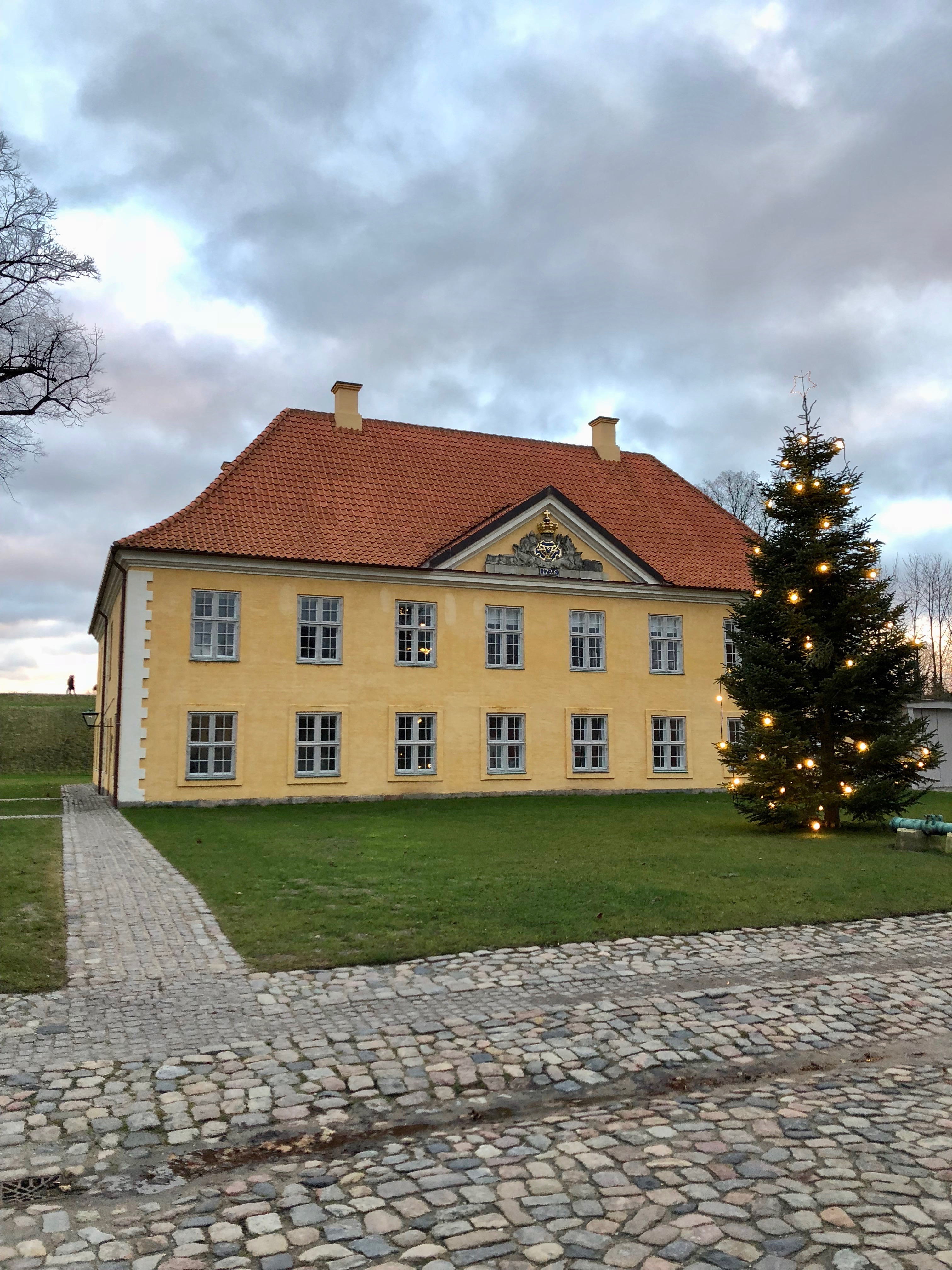
Although its original use was for the military, today it is a wonderful outdoor space to explore. The buildings inside are colorful, similar to those in Nyhavn. The central area, known as “The Rows,” consists of red three-story houses, which served as the barracks for the soldiers. Another yellow building nearby served as the commander’s house and is built in the Baroque style.
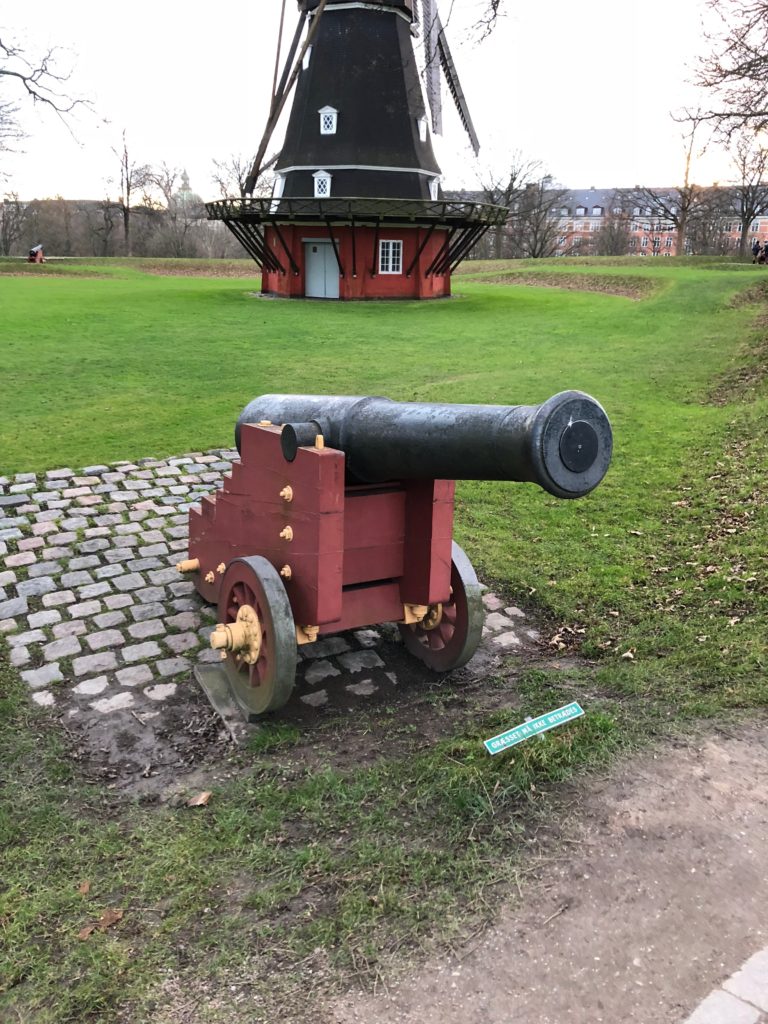
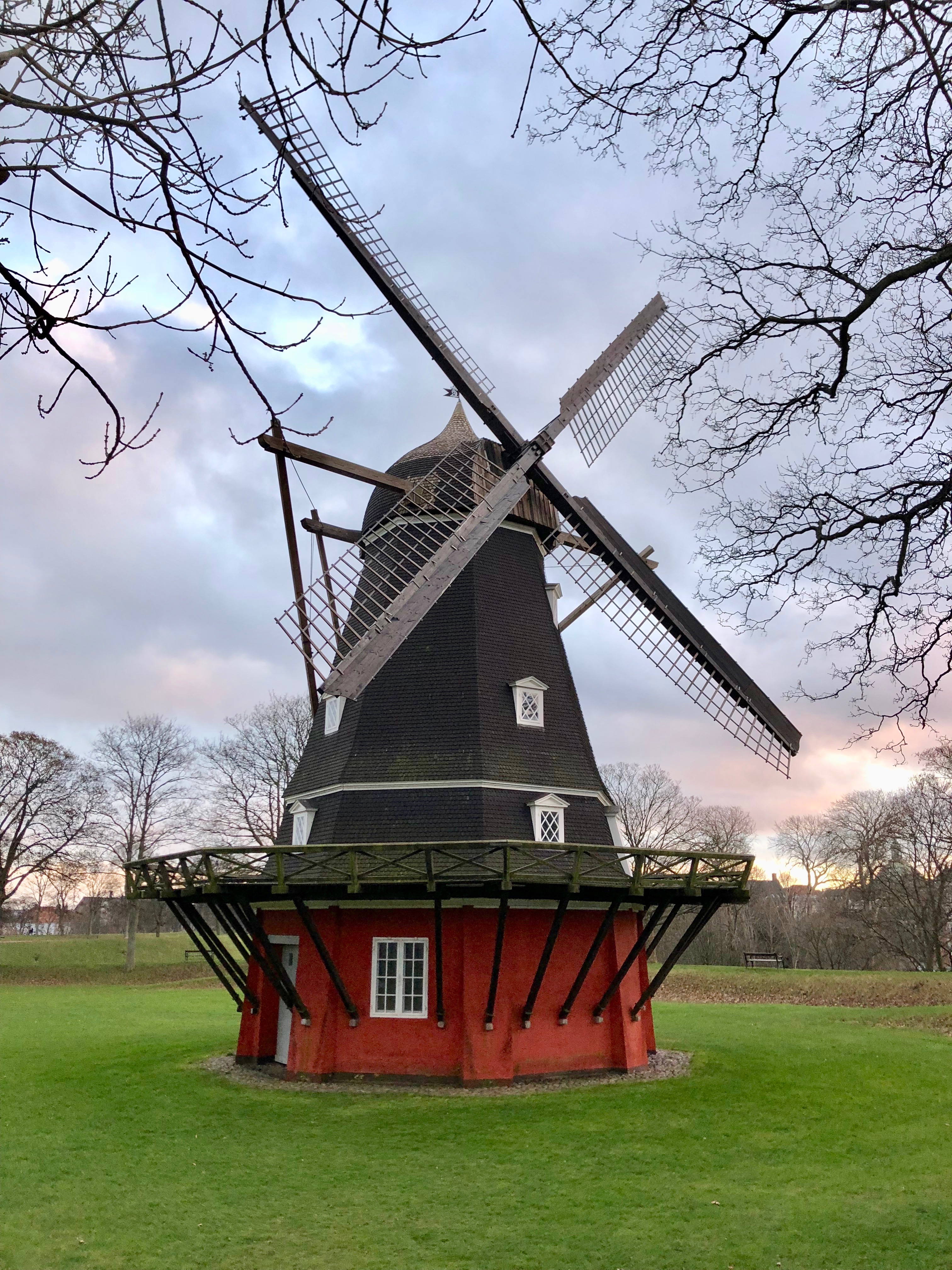
I took a stroll along the fortress’s high, grass-covered earthwork. From there, I got a scenic view of the surrounding water and the buildings I had just explored in the area below. There was even a Dutch-style windmill along the way, which was a hint to what I’d be seeing at my next stop in Amsterdam!
Amalienborg
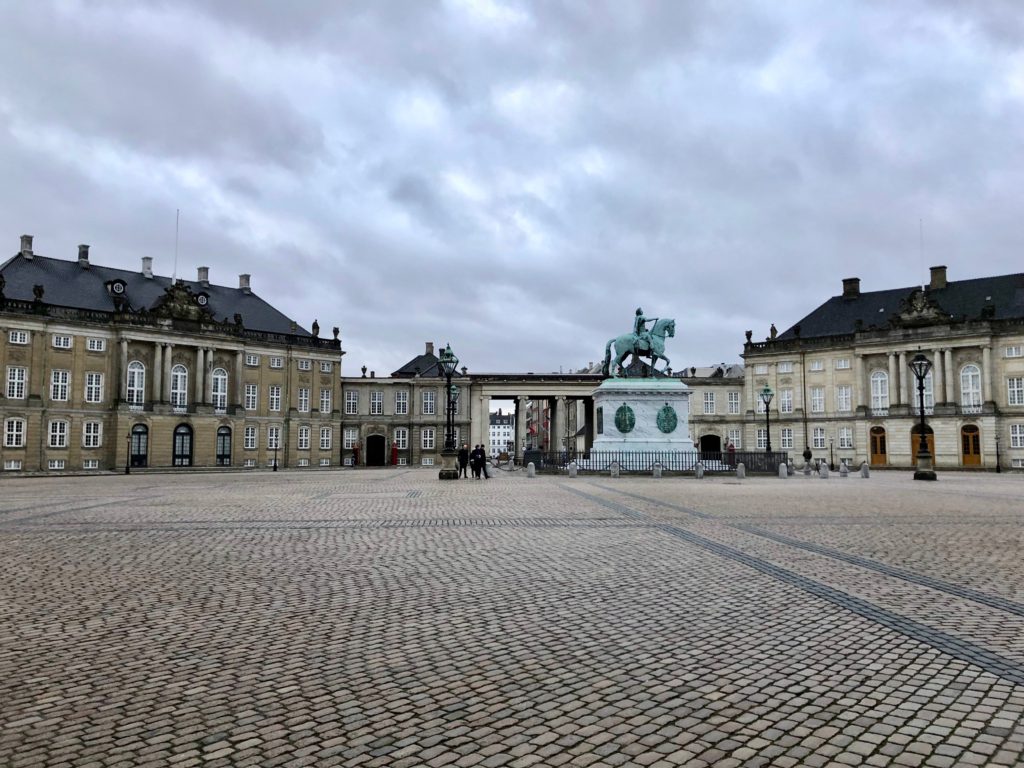
Further down the road, I got to the next big stop: Amalienborg. This octagonal square is surrounded by rococo buildings and is home to the Danish Royal Family. All around me, I could see Royal Guards on duty, with their bearskin hats and rifles. Right beside the square, I could see a church towering over the other buildings.
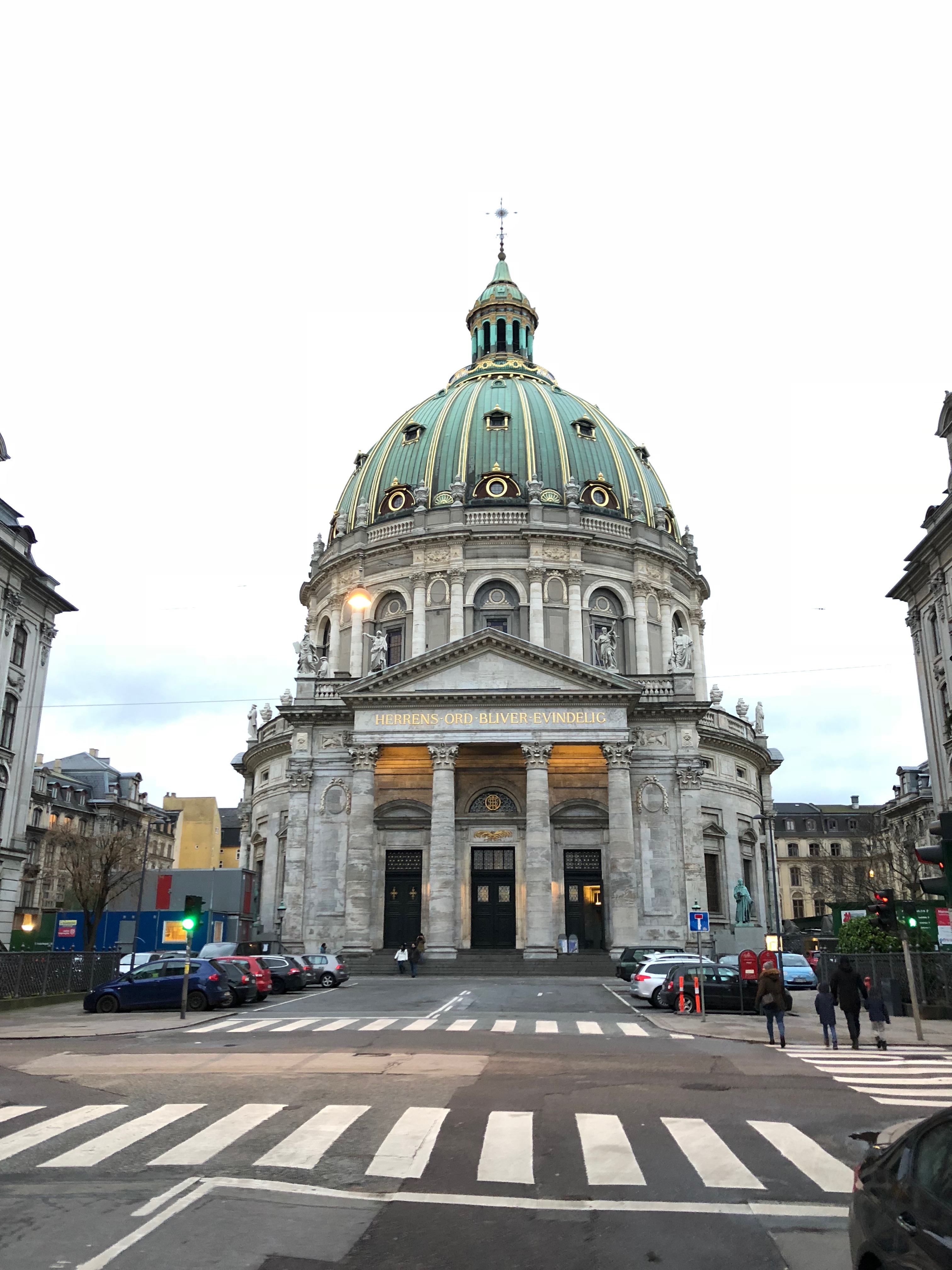
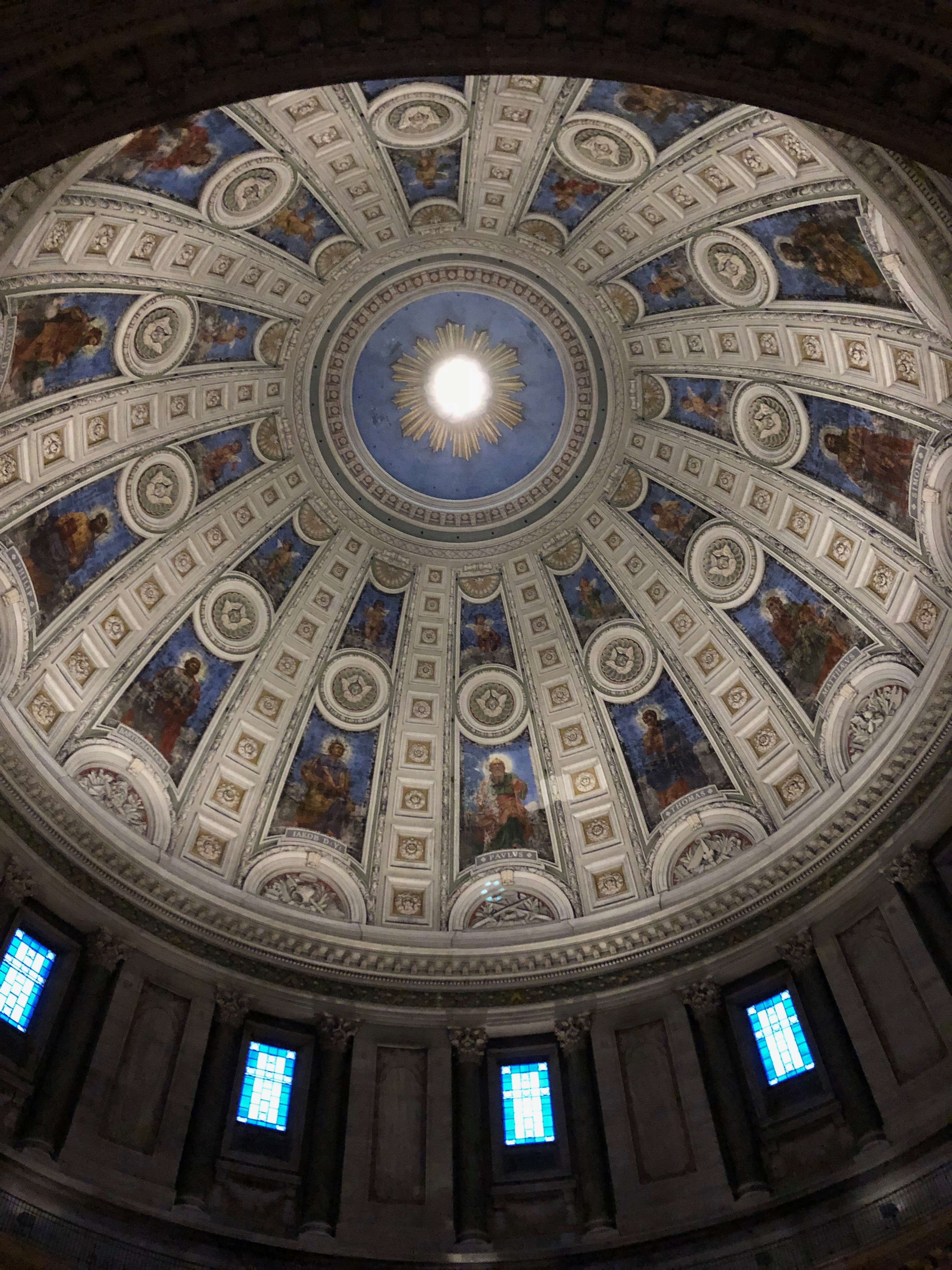
Frederik’s Church is a beautiful work of architecture that is a worthy stop for any architect visiting Europe. Its marble exterior follows the typical fashion of rococo churches with Corinthian columns, ornamentation, and plenty of statues. The green dome sets this church apart from others such as St. Peter’s Basilica in Vatican City. Inside, a large rotunda with an oculus lights up the otherwise dim interior. When I visit churches, I always take a moment to sit down and pause to admire the beauty of their interiors and get some isolation from the bustling crowds of the outside.
The Round Tower
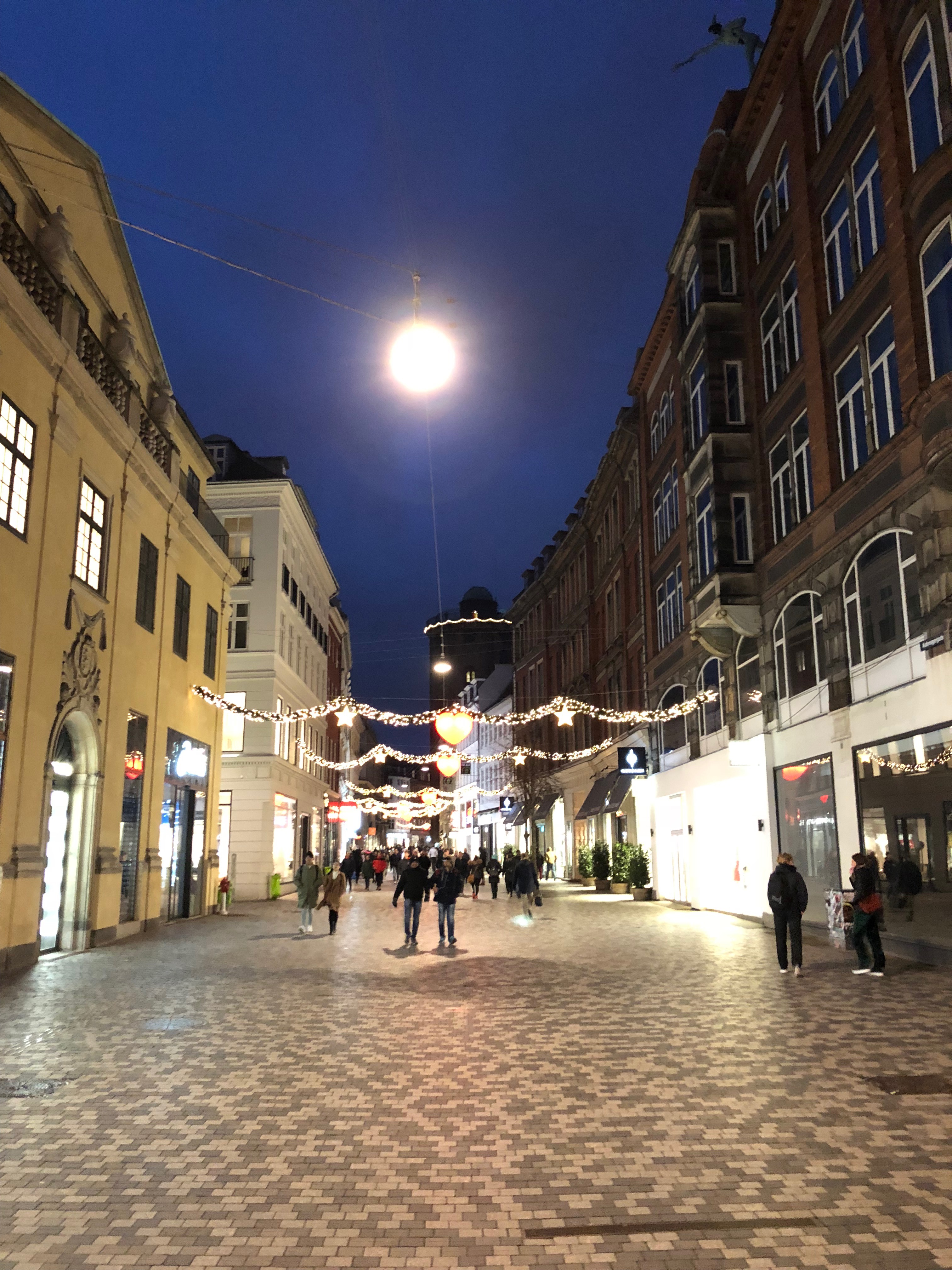
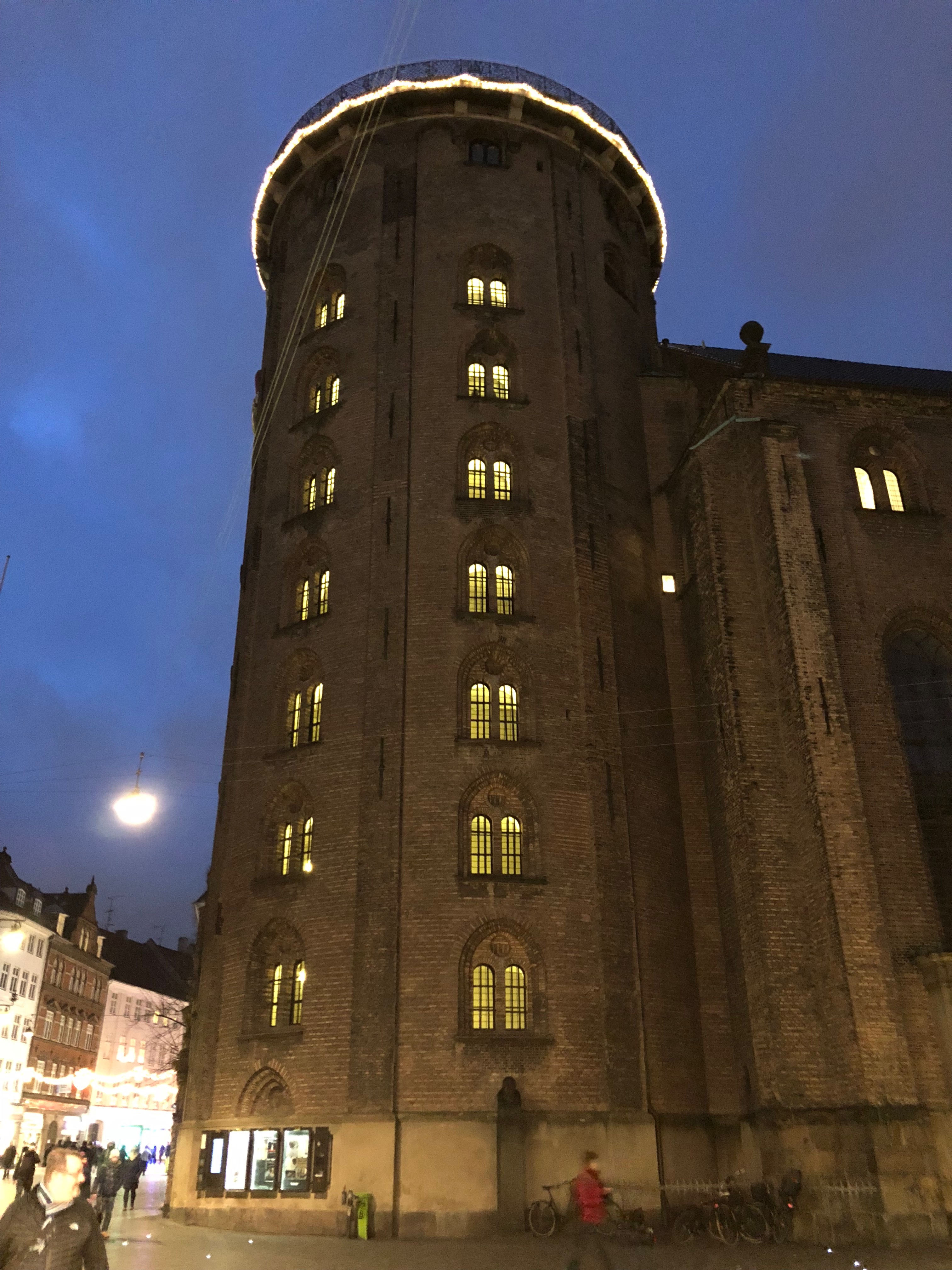
By now, my walk had taken me back towards Copenhagen’s city center, and
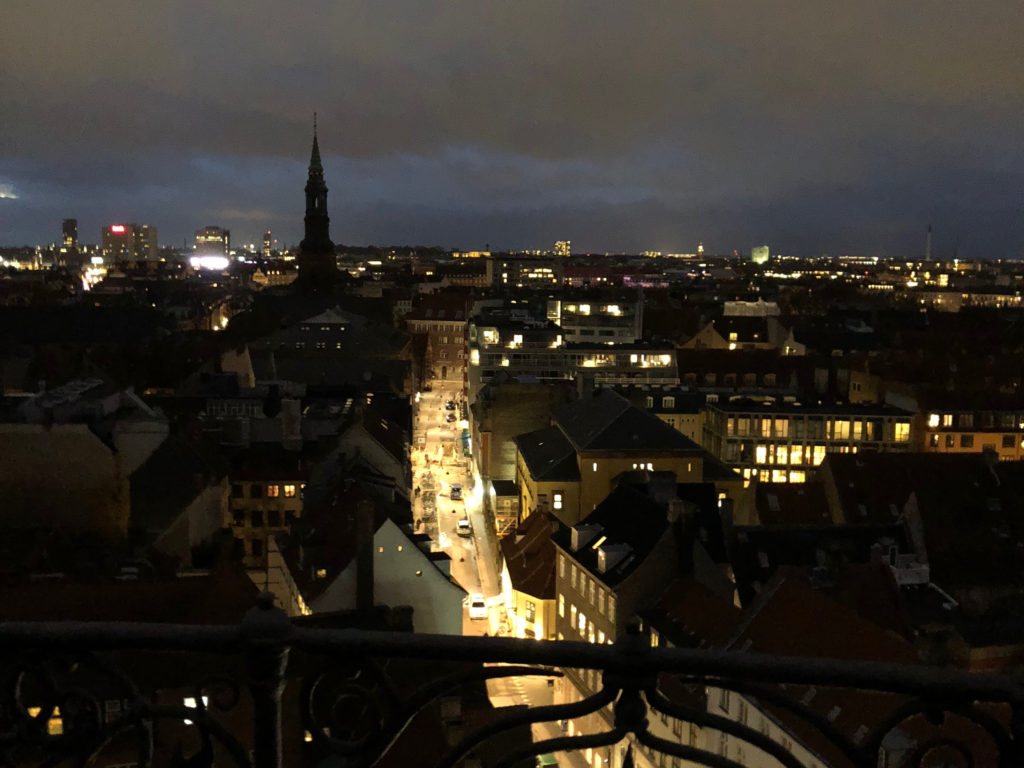
I paid the admission fee and began walking up its spiraling interior ramp. Once I got to the top, I was rewarded with a 360° view of everything I had seen that day! It was especially magical to see the city all lit up at night.
After another intense day of sightseeing, it was time to head back to the hostel for drinks and more conversations with my fellow travelers. Whenever I am traveling, I always love to compare notes of where everyone is going. I had hostel mates that were off to Scotland, Norway, and Germany for their next stops. One of my favorite parts of travel is the people I meet along the way, and Copenhagen is not only a beautiful city but a friendly one too!
